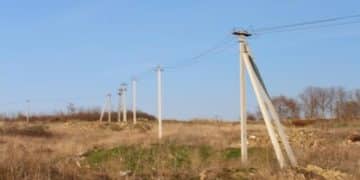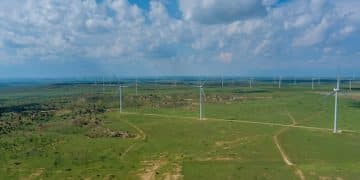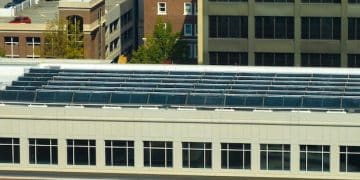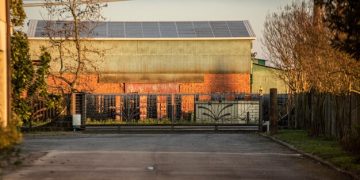Tesla Powerwall Cost in 2025: Installation, ROI, and Deep Dive for US Homeowners
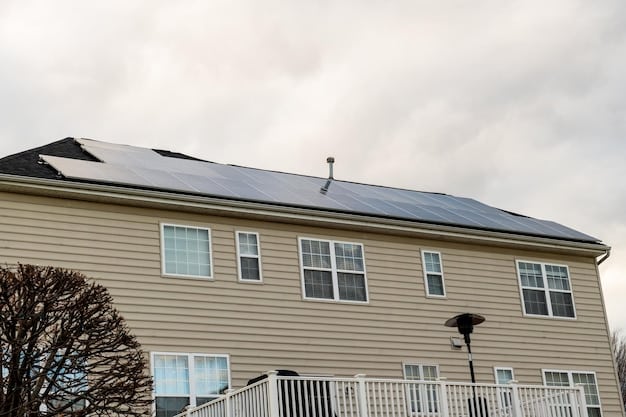
The real cost of a Tesla Powerwall in 2025 for US homeowners includes not only the initial purchase price but also installation fees, ongoing maintenance, and potential long-term return on investment through energy savings and grid services.
Considering a Tesla Powerwall for your home in 2025? Understanding the true cost, including installation, maintenance, and the potential return on investment (ROI), is crucial for US homeowners. Let’s delve into the financial aspects of investing in this popular energy storage solution and help you determine if it’s the right choice for your needs.
Understanding the Initial Cost of a Tesla Powerwall
The initial investment in a Tesla Powerwall is a significant factor for homeowners. This includes the cost of the unit itself and any additional hardware required for installation. It’s important to understand the base price and what it covers.
Base Price of the Powerwall Unit
The base price of a single Tesla Powerwall unit typically ranges from $8,000 to $9,000 before any incentives or rebates. This price covers the battery itself and essential components for operation. However, it does not include installation costs, which can add significantly to the overall expense.
Additional Hardware and Components
Besides the Powerwall unit, additional hardware may be necessary depending on your home’s electrical system and your specific energy needs. This can include:
- Backup Gateway: A crucial component for grid outages, costing around $1,000 to $1,500.
- Additional Wiring and Conduit: Required to connect the Powerwall to your home’s electrical panel.
- Mounting Hardware: Depending on the installation location, specific brackets or enclosures may be needed.
Understanding these additional costs upfront is essential for accurate budgeting.
In conclusion, the initial cost of a Tesla Powerwall is just the starting point. Factoring in the hardware requirements will provide a clearer picture of the upfront investment.
Installation Costs: What to Expect
Installation costs can vary widely depending on several factors, making it crucial to get a detailed quote from a certified installer. These costs encompass labor, permits, and any necessary upgrades to your home’s electrical system.

Labor Costs for Installation
Labor costs can range from $3,000 to $7,000, depending on the complexity of the installation. Factors influencing labor costs include:
- Location of Installation: Indoor vs. outdoor installations can affect labor time.
- Complexity of Wiring: Older homes may require more extensive wiring upgrades.
- Permit Requirements: Obtaining permits can add to the overall timeline and cost.
It’s advisable to get multiple quotes to compare labor costs and ensure you’re getting a fair price.
Permits and Inspections
Permits and inspections are necessary to ensure the installation meets local building codes and safety standards. These costs typically range from $500 to $1,500, depending on your location and the complexity of the project. Ignoring permit requirements can lead to fines and necessitate costly rework.
Electrical System Upgrades
In some cases, your home’s electrical system may need upgrades to accommodate the Powerwall. This might include upgrading the electrical panel or adding new circuits. These upgrades can add $1,000 to $3,000 to the overall cost. A professional assessment will help determine if upgrades are necessary.
Overall, understanding the factors that influence installation costs is key to budgeting accurately for your Tesla Powerwall project.
Maintenance Costs and Considerations
While Tesla Powerwalls are designed to be low-maintenance, there are still ongoing costs to consider. These include potential repairs, battery degradation, and software updates that ensure optimal performance.
Warranty Coverage and Potential Repairs
Tesla Powerwalls come with a 10-year warranty that covers defects in materials and workmanship. However, this warranty does not cover normal wear and tear or damage caused by external factors. Understanding the warranty terms is essential for managing potential repair costs.
Potential repair costs can vary depending on the issue. Minor repairs may be covered under warranty, while more extensive repairs could cost several hundred to a few thousand dollars.
Battery Degradation Over Time
Like all batteries, Tesla Powerwalls experience degradation over time. This means that their storage capacity gradually decreases, affecting their ability to provide backup power or store solar energy. The rate of degradation depends on usage patterns and environmental conditions.
While the 10-year warranty guarantees at least 70% capacity retention, it’s important to factor in potential capacity loss when calculating the long-term ROI.
Software Updates and Monitoring
Tesla provides regular software updates to improve the performance and functionality of the Powerwall. These updates are typically free and can be installed remotely. Monitoring the Powerwall’s performance through the Tesla app is also crucial for identifying any potential issues early on.
Maintenance of a Tesla Powerwall involves monitoring, software updates, and understanding warranty coverage. Careful management can minimize potential long-term costs.
Calculating the Return on Investment (ROI)
Evaluating the ROI of a Tesla Powerwall involves considering energy savings, tax incentives, and potential revenue from grid services. Understanding these factors will help you determine if the investment is financially worthwhile.
Energy Savings from Solar and Backup Power
One of the primary benefits of a Powerwall is the ability to store solar energy for later use. This can significantly reduce your reliance on grid electricity, leading to substantial cost savings over time.
Backup power capabilities also provide peace of mind during grid outages, preventing food spoilage and ensuring essential appliances continue to function. The value of this backup power can be significant, especially in areas prone to frequent outages.
Federal and State Tax Incentives
The federal government offers a tax credit for solar energy systems that includes battery storage like the Powerwall. This credit can cover up to 30% of the installation cost, significantly reducing the upfront investment. Numerous states also offer additional incentives and rebates for energy storage systems.
Be sure to research and take advantage of all available incentives to maximize your ROI.

Revenue from Grid Services and Demand Response Programs
In some areas, Powerwall owners can participate in grid services programs, allowing them to sell excess energy back to the grid during peak demand. This can generate additional revenue and further improve the ROI. Demand response programs offer incentives for reducing energy consumption during peak hours.
- Net Metering: Selling excess solar energy back to the grid.
- Demand Response: Reducing energy usage during peak demand events.
- Frequency Regulation: Providing grid stabilization services.
These programs can provide a significant boost to your Powerwall’s financial return.
In conclusion, a comprehensive evaluation of energy savings, incentives, and grid services is crucial for accurately calculating your Tesla Powerwall ROI.
Financing Options and Payment Plans
Financing options can make a Tesla Powerwall more accessible for homeowners. Understanding the available options, including loans and leasing, can help you make an informed decision that fits your budget.
Home Equity Loans and Lines of Credit
Home equity loans and lines of credit allow you to borrow against the equity in your home to finance the Powerwall installation. These options typically offer lower interest rates compared to unsecured loans, making them an attractive choice for homeowners with sufficient equity.
Be sure to compare interest rates and repayment terms to find the best option for your financial situation.
Solar Loans and Green Energy Loans
Solar loans and green energy loans are specifically designed for financing renewable energy projects like solar panel installations and battery storage systems. These loans often come with favorable terms and may be easier to qualify for than traditional loans.
- Specialized Lenders: Companies that focus on solar and green energy financing.
- Government-Backed Programs: Loans with lower interest rates and longer repayment terms.
Explore these options to find a financing solution tailored to your energy needs.
Leasing Options and Power Purchase Agreements (PPAs)
Leasing options and power purchase agreements (PPAs) allow you to use the Powerwall without owning it. In a lease, you pay a fixed monthly fee for the use of the equipment. In a PPA, you pay for the energy produced by the Powerwall.
These options can lower the upfront cost but may not provide the same long-term financial benefits as owning the system.
In summary, weighing the pros and cons of different financing options is essential for making a cost-effective decision about your Tesla Powerwall investment.
Making the Right Decision for Your Home
Deciding whether to invest in a Tesla Powerwall requires careful consideration of your energy needs, financial situation, and long-term goals. Assess your energy consumption, evaluate your potential savings, and consider the environmental benefits to make an informed decision.
Assessing Your Energy Needs and Consumption
Start by analyzing your energy consumption patterns. Review your electricity bills to understand how much energy you use each month and during peak hours. This will help you determine the size of the Powerwall system you need and estimate potential savings.
Consider factors like your household size, appliance usage, and whether you have electric vehicles or other energy-intensive devices.
Evaluating Potential Savings and Environmental Benefits
Calculate potential savings by estimating how much you can reduce your reliance on grid electricity and how much you can earn from grid services programs. Consider the environmental benefits of reducing your carbon footprint and supporting renewable energy.
- Reduced Electricity Bills: Storing solar energy for later use.
- Backup Power: Avoiding costs associated with power outages.
- Environmental Impact: Reducing carbon emissions and promoting sustainability.
Considering Long-Term Energy Goals and Resale Value
Think about your long-term energy goals and how the Powerwall can help you achieve them. Consider the potential impact on your home’s resale value if you decide to sell in the future. Energy-efficient homes are becoming increasingly attractive to buyers.
In conclusion, a thorough assessment of your energy needs, potential savings, and long-term goals is crucial for making the right decision about investing in a Tesla Powerwall.
| Key Point | Brief Description |
|---|---|
| 💰 Upfront Costs | Includes the Powerwall unit and installation fees. |
| ☀️ Energy Savings | Reduce reliance on the grid by storing solar energy. |
| ✅ Tax Incentives | Federal and state incentives can lower the initial cost. |
| 🔋 Battery Life | Consider battery degradation and warranty coverage. |
Frequently Asked Questions (FAQ)
The base price ranges from $8,000 to $9,000, excluding installation. Total costs, including installation and hardware, can range from $12,000 to $16,000, though incentives can significantly reduce this.
The main benefits include energy savings from solar storage, backup power during outages, and potential revenue from grid services. It also helps reduce your carbon footprint and supports renewable energy.
Yes, the federal government offers a tax credit that can cover up to 30% of the installation cost. Check for state and local incentives as well to maximize your savings.
Tesla Powerwalls come with a 10-year warranty guaranteeing at least 70% capacity retention. Actual lifespan can vary depending on usage patterns and environmental conditions.
You can finance a Powerwall through home equity loans, solar loans, green energy loans, or leasing options. Each has different terms and benefits, so consider your financial situation carefully.
Conclusion
Investing in a Tesla Powerwall in 2025 presents a complex financial equation, balancing upfront costs with long-term savings and potential revenue streams. By carefully considering installation expenses, maintenance requirements, available incentives, and your individual energy needs, you can determine whether a Powerwall is a sound investment for your home and energy future.
